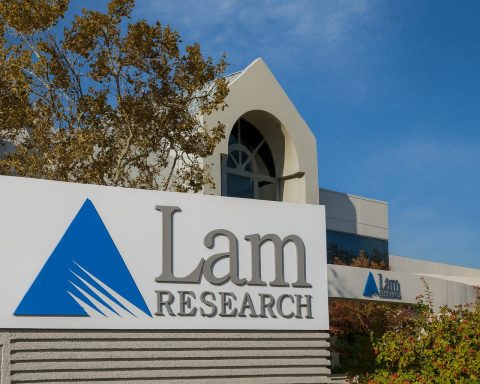- GEVO jumps on fresh catalyst: Gevo, Inc. stock spiked higher this week, gaining nearly 10% in pre-market trading after securing a key U.S. Department of Energy loan extension [1]. Shares now hover around the mid-$2 range – roughly 30% above year-ago levels, outpacing the S&P 500’s ~18% gain [2] – and are up about 24% year-to-date [3].
- First-ever profit fuels momentum: The renewable fuels upstart surprised the market with its first profitable quarter in Q2 2025 (net income $2.1 M, EPS $0.01 vs an expected –$0.07) [4]. Revenue hit $43.4 M – a big jump from the prior quarter – thanks largely to carbon credit sales. The earnings surprise sent GEVO stock surging 65% after-hours and over 40% the next day [5], kickstarting a rally.
- Major deals and extensions: In recent days Gevo announced a $1.46 B DOE loan commitment extension to April 2026 [6], allowing it to revamp its flagship project. Plans include a lower-cost 30 MGPY sustainable jet fuel plant in North Dakota [7] and leveraging captured CO₂ for enhanced oil recovery [8]. Last month, Gevo also inked a 5-year carbon credit offtake worth ~$26 M [9] – bolstering its revenue with sales of carbon removal credits.
- Analysts cautiously optimistic: Wall Street is warming up to Gevo’s turnaround. UBS recently hiked its price target to $2.25 (neutral rating), and H.C. Wainwright reiterated a bullish $14 target (Buy) – implying triple-digit upside [10]. Overall, consensus sits at a Hold with an ~$8 average target [11]. Experts note Gevo’s big opportunity, but also its risks: “continued losses and shifting policy keep risks – and rewards – high for investors,” one analysis observed [12].
- Clean fuel outlook bright, challenges remain: Financially, Gevo’s fundamentals are improving – Q2 adjusted EBITDA turned positive [13] [14] and it holds ~$127 M cash [15]. Still, margins remain negative (operating margin ~–72%) [16] and the company relies on policy incentives. The biofuels boom and sustainable aviation fuel (SAF) mandates provide a tailwind, but Gevo must execute large-scale projects on time to capitalize. Analysts and industry leaders alike stress the need for rapid scale-up to meet climate goals [17].
Current Stock Price & Performance Trends (Oct 15, 2025)
Gevo’s stock price has been on a wild ride in 2025. After starting the year near the low-$1 range, GEVO climbed steadily on improving fundamentals and policy buzz. As of mid-October, the stock trades around $2.50–$2.60 per share – up roughly 30% from a year ago and 23.7% year-to-date [18]. This outperforms the broader market by a wide margin [19]. Shares saw an especially sharp spike following Q2 earnings in August and again this week on regulatory news (more on that below).
In the past week alone, GEVO has popped from the low-$2s to the mid-$2s, including a ~10% jump pre-market on Oct. 15 after a major announcement [20]. The stock is now trading well above key technical levels – about 30% above its 50-day moving average [21] – reflecting strong positive momentum. Trading volumes spiked on news, with over 10 million shares changing hands on Oct. 14 (vs ~4 million average) [22]. Gevo’s 52-week range tells the tale of volatility: a low of just $0.92 (during early 2023 headwinds) and a high of $3.39 after the summer earnings euphoria [23]. At current prices, the company’s market capitalization sits around $500 M [24].
Notably, Gevo’s beta is ~2.1 [25] and its implied volatility tops 60% [26] – nearly triple the market average. This means the stock sees outsized swings (both up and down) as sentiment shifts. Short interest has been elevated (recently ~14.5% of the float) but has ticked down as the stock recovered [27], suggesting some bears are covering their positions. Overall investor sentiment appears to have turned “cautiously optimistic,” with social discussion on platforms like Stocktwits even hitting “extremely bullish” levels after the latest news [28].
From Losses to Profit: Q2 2025’s Turning Point
For most of its history, Gevo has been a pre-profit clean energy venture – long on promise but short on earnings. That narrative flipped in Q2 2025 when Gevo delivered its first-ever quarterly profit [29]. The company reported net income of $2.1 million for Q2, equivalent to $0.01 per share, smashing expectations of a ~$0.06 loss [30]. Just a year prior, Gevo was deep in the red; this swing to black ink marked a major financial milestone.
What powered the surprise profit? In large part, carbon credits and clean fuel incentives. Gevo’s Q2 revenue surged to $43.4 million (up $38 M year-on-year) [31] [32], driven by the monetization of $22 M worth of Clean Fuel Production Credits (under the new Section 45Z program) and initial sales of carbon dioxide removal credits [33] [34]. These policy-driven credits effectively boosted Gevo’s top line and slashed its production costs – “the 45Z tax credit allowed us to lower overall production costs”, management noted [35] [36]. In fact, Gevo recognized a one-time catch-up of $20+ M in Q1–Q2 from 45Z credits [37] [38], turning its ethanol business segment immediately profitable.
This positive earnings shock was a game-changer for market sentiment. Gevo’s stock skyrocketed 65% in after-hours trading the evening of its August 11 earnings release [39]. The next day, shares continued to rip higher – at one point up 46% in pre-market [40] – as traders digested the implications. It appears many investors had been betting against the company (given the high short interest and prior losses), so the short squeeze was on. GEVO hit fresh 2025 highs in the mid-$3s before cooling off.
Equally important, the Q2 call signaled a credible turnaround strategy. CEO Dr. Patrick Gruber and new CFO Leke Agiri laid out how Gevo is leveraging policy incentives and focusing on execution. “We expect to generate over $10 million of [45Z] credits per quarter…combining our ethanol and RNG facilities,” Agiri explained, adding that these credits offset costs rather than being pure revenue [41]. Management also highlighted progress in selling carbon dioxide removal (CDR) credits, with $1 M sold in Q2 and $3–5 M more expected by year-end [42] [43]. In short, Gevo has tapped into an alternate income stream by monetizing the low-carbon attributes of its fuels – an approach that significantly bolstered its Adjusted EBITDA to +$17 M in Q2 [44].
Investors cheered Gevo’s newfound financial resilience. The stock’s rally, though partially retraced, demonstrated that the market sees a path to viability if Gevo can keep executing. Historically, such pops tended to fade (with traders taking profits) [45], but Gevo’s ability to follow through on its strategy – and secure new deals – has kept the momentum more intact this round.
DOE Loan Extension: A $1.46 B Lifeline and New Project Plans
Gevo’s biggest news this week came on October 14: the company secured an extension on its massive DOE loan guarantee commitment [46]. This conditional commitment – originally granted in late 2024 – would see the U.S. Department of Energy guarantee up to $1.46 billion in loans for Gevo’s first commercial-scale SAF facility in Lake Preston, South Dakota [47]. Such government-backed financing is hugely significant for a company Gevo’s size, essentially underpinning the bulk of funding for its flagship project (dubbed “Net-Zero 1”).
However, economic shifts and design adjustments had put the project’s timeline in doubt. The loan guarantee came with a deadline to reach financial close, which Gevo was in danger of missing. The new announcement pushes the deadline out to April 16, 2026 [48], buying Gevo precious time. Crucially, it also gives the company leeway to “evaluate potential changes to the project scope” [49]. And indeed, Gevo is seizing this chance to right-size its approach:
- Scaling down to scale up: Among the proposed modifications, Gevo plans to initially build a smaller, lower-cost SAF plant – a 30 million gallon-per-year “ATJ-30” facility – at its existing ethanol site in Richardton, North Dakota [50]. This would be a scaled-down version (half the capacity) of the originally planned 60 MGPY Net-Zero 1 plant in South Dakota. The rationale is to start with a more capital-light project that can come online faster and demonstrate the technology at scale, before tackling the larger plant. Gevo’s North Dakota site (acquired from Red Trail Energy) already produces ethanol and has carbon capture in place, making it an ideal launchpad.
- Carbon utilization tweaks: The DOE extension also opens the door for Gevo to explore the “optimal use” of captured CO₂ from its process [51]. One idea on the table: using CO₂ for enhanced oil recovery (EOR) in nearby oilfields [52]. While this might sound counterintuitive for a clean fuel firm, EOR can provide a revenue stream for captured CO₂ and is a proven commercial use. It suggests Gevo is looking to monetize every aspect of its carbon-handling capability – capturing emissions from ethanol fermentation and selling that CO₂ to third parties (or getting credits for sequestering it). This flexibility could improve project economics as well as appeal to the DOE’s mandate for innovative carbon reduction.
Gevo’s announcement was met with a sigh of relief in the market – hence the stock jump. By extending the loan terms, the DOE essentially reaffirmed confidence in Gevo’s project, despite industry-wide cost inflation and some political uncertainty around green energy funding. (Notably, the previous U.S. administration had reviewed and dialed back certain loan program commitments, raising questions about whether Gevo’s $1.46B guarantee would survive [53]. The extension suggests continued support under current policy.)
The DOE backing is transformational: it de-risks Gevo’s financing for Net-Zero 1 to a large extent, assuming Gevo meets final conditions. As one industry commentator put it, “Gevo’s business model checks all the boxes” for domestic SAF development at scale [54] – exactly what the government wants to foster. With the extension in hand, Gevo can proceed to finalize engineering and line up the remaining funds (equity or partner contributions) for its SAF plants. CEO Patrick Gruber noted on the last call that “we need to finish the engineering for the ATJ-30 and get it financed. The ATJ-60 [South Dakota] project will proceed once we have clarity on the Summit carbon pipeline” [55]. The Summit pipeline is a proposed CO₂ pipeline critical for injecting Net-Zero 1’s emissions underground; its timeline had been uncertain due to regulatory hurdles. Now with a 2026 runway, Gevo has time for these pieces to fall into place.
In summary, the DOE loan extension is a major win for Gevo. It keeps the dream of a world-scale SAF facility alive, while enabling a more attainable interim step in North Dakota. Investors see this as validating Gevo’s strategy and reducing the risk of a cash crunch. It’s effectively a $1.46 billion vote of confidence from Uncle Sam in Gevo’s technology and the future of sustainable aviation fuel.
New Deals: Carbon Credit Offtake and More
Beyond government support, Gevo has been striking its own deals to build a sustainable revenue base. On Sept. 18, 2025, the company announced a noteworthy partnership with Biorecro – a carbon removal solutions firm – to sell Gevo’s carbon credits. Under the multi-year agreement, Gevo’s subsidiary (Net-Zero Richardton LLC) will supply high-quality carbon dioxide removal credits from its North Dakota operations, with Biorecro as the offtaker [56]. The deal is projected to generate about $26 million over five years for Gevo [57] [58].
This collaboration essentially locks in a steady buyer for Gevo’s carbon sequestration efforts. Gevo’s ND ethanol plant is paired with a cutting-edge BECCS setup – Bioenergy with Carbon Capture and Storage – which can capture and store up to ~1 million tons of CO₂ per year underground [59] [60]. That makes it one of the first industrial-scale carbon removal projects in the world. The credits (certified by Puro.earth as CORCs) are valuable to companies seeking to offset emissions that are hard to eliminate. “This deal with Biorecro demonstrates the demand for high-quality carbon dioxide removal credits,” said Gevo’s Chief Carbon Officer, Dr. Paul Bloom [61]. By securing a buyer for a portion of these credits, Gevo not only earns revenue (~$5 M per year on average) but also validates the market for its carbon services.
Investors applauded the Biorecro deal, viewing it as further diversification of Gevo’s income. Rather than relying solely on fuel sales (which can be affected by commodity prices), Gevo is tapping into the booming carbon markets. Carbon credits, both compliance and voluntary, are in high demand as companies race toward net-zero targets. Gevo is positioning itself as a leader in the “carbon economy,” not just a biofuel producer. This could command a higher valuation multiple, given the lofty prices successful carbon tech companies enjoy.
Besides carbon offtakes, Gevo in recent quarters has also announced long-term SAF sales agreements with major airlines. For example, it secured deals to supply Finnair and Japan Airlines with millions of gallons of SAF per year starting in 2027 [62] [63]. These contracts (contingent on Gevo building its plants) underscore that there is real customer demand waiting for Gevo’s fuel. Gevo has over 200 MGPY of SAF supply agreements signed – valued around $1.2 B in annual sales potential [64] – including a broad memorandum with oneworld Alliance carriers. Such agreements give confidence that if Gevo can produce the fuel at scale, buyers will line up for the low-carbon jet fuel.
All told, between government support, corporate partnerships, and credit monetization, Gevo is methodically de-risking its business model. The pieces are coming together: guaranteed loans for financing, engineering partners on the plants, offtake agreements for product, and now offtake for carbon credits. Each of these reduces uncertainty and helps address investor concerns about how Gevo will make money while scaling up.
Analyst Commentary & Forecasts: “High Rewards, High Risk”
Wall Street analysts have begun to take note of Gevo’s progress – and while opinions vary, the recent trend is more positive than not. The stock currently carries a consensus rating of “Hold”, but that’s an upgrade from more bearish views last year. According to MarketBeat, one analyst rates GEVO a Buy and two rate it Hold, yielding a consensus price target of $8.13 (roughly +200% upside from the current price) [65]. That wide gap between current and target price reflects the high-risk, high-reward nature of Gevo’s story.
Notably, H.C. Wainwright, a firm known for covering emerging tech, reiterated its Buy rating after Gevo’s Q2 results – sticking with a bold $14.00 price target [66]. Analyst Amit Dayal has been bullish on Gevo’s long-term prospects, arguing that successful execution of its Net-Zero projects could dramatically ramp revenues (and justify that target, which is 5x the current stock price). “The recent [Red Trail] acquisition could finally make that $14 price target a reality next year,” Dayal suggested, highlighting how Gevo’s consolidation of the ND ethanol plant accelerates its path to SAF production [67]. The $14 target was actually a reduction from a prior $18, indicating even bulls are tempering expectations to account for dilution and timelines [68]. Still, it underscores a view that Gevo’s upside could be transformational if all goes right.
Other analysts have turned more neutral but still improved their outlook. UBS Group in September raised its target from $1.15 to $2.25 and moved Gevo to Neutral, essentially acknowledging the company’s reduced bankruptcy risk and better fundamentals [69] [70]. Meanwhile, Zacks Investment Research upgraded Gevo from Strong Sell to Hold in August after the Q2 profit, and independent analyst forum Wall Street Zen likewise moved from Sell to Hold by mid-September [71]. There seems to be a consensus that Gevo has turned a corner, but skepticism remains on the scale of future profits. As one Yahoo Finance commentary put it, analysts forecast Gevo’s revenue will reach $178 M in 2025 – massive growth from ~$40 M in 2024, but the company is still expected to post a net loss for the full year [72]. In other words, growth is not the issue; sustained profitability is the hurdle that Gevo still must clear in the next couple of years.
Beyond the numbers, analysts and financial writers have offered color on the Gevo opportunity. Finimize, in an asset snapshot this week, described Gevo as a company riding strong decarbonization tailwinds, “but continued losses and shifting policy keep risks – and rewards – high for investors.” [73] This encapsulates the bull vs. bear debate. Bulls say Gevo is at the right place at the right time – a first-mover in SAF with government backing during an aviation fuel transformation. Bears point out that Gevo still loses money on an operating basis (excluding one-off credits) and will be burning cash to construct facilities; any policy rollback or project delay could hurt.
Crucially, Gevo’s balance sheet gives it some breathing room. The company had about $127 M in cash at mid-year [74] after raising capital and generating credit revenue, and its debt-to-equity is low (0.29) [75]. The current ratio stands around 2.3 [76], indicating sufficient liquidity for near-term needs. This means Gevo can fund operations and initial project work into 2024 without immediately tapping equity markets again – a key concern for shareholders who’ve endured dilution in the past. Analysts have noted this net cash position as a positive: “Gevo holds a net cash position… management’s shown discipline, securing non-dilutive DOE funding” [77].
Going forward, what do the pros expect? Many are in “wait-and-see” mode regarding execution milestones. Key catalysts will include: closing the final DOE loan agreement (after any scope changes), starting construction on the ND ATJ-30 plant, securing additional offtake contracts (perhaps with major airlines or oil refiners), and hitting interim production targets at the existing ethanol/RNG operations. Any indications that the Net-Zero 1 plant could be delayed beyond 2026 might dampen forecasts, while a smooth ramp-up could lead to coverage initiations by more banks.
In summary, financial experts see enormous potential in Gevo – but only if it navigates the next few years successfully. The stock could multiply in value (as price targets imply) if Gevo becomes a leading SAF producer with healthy margins. Conversely, missteps or external setbacks (e.g. cheaper oil undercutting biofuel economics) could send shares reeling again. As one analyst quipped, Gevo is “a high-conviction play with caveats” [78] – not for the faint of heart, but potentially rewarding for believers in the clean energy transition.
Technical & Fundamental Analysis of GEVO
From a technical analysis perspective, Gevo’s chart in 2025 reflects a classic volatility-driven uptrend. The stock’s 50-day moving average (50DMA) has turned upward since August, and GEVO is trading well above both its 50DMA and 200DMA currently [79]. After the Q2 spike, momentum oscillators like RSI went into overbought territory, but the subsequent pullback relieved that condition. Recent price action shows higher lows being set – for instance, shares dipped to around $1.50 in late September but rebounded strongly into October, indicating buyers stepping in on dips.
Volume patterns also confirm increased accumulation: the big rallies in August and October were on surging volume, while pullbacks have seen lighter trading. This is a healthy sign that interest is more on the buy side. One technical caution: Gevo has a relatively low share price and floats around 200 million shares, making it a favorite for day traders and algorithmic trading swings. That contributes to its high beta (~2+) and means stop-losses and position sizing are crucial for technical traders in this name.
Key support levels to watch might be around $2 (a recent breakout point and a nice round number) and $1.60 (approximate 50-day avg). On the upside, resistance could appear near the year’s high ~$3.40 – a break above that would be very bullish and potentially target the $5-$6 zone (levels last seen in 2021). Many chartists also note the improving on-balance volume (OBV) and relative strength vs. small-cap indices, reflecting that GEVO has been outperforming peers during its rally.
On the fundamental analysis front, Gevo presents a mix of strong growth prospects and remaining red ink. Let’s break down a few core metrics:
- Revenue Growth: Gevo’s revenue is on a steep climb. Trailing twelve-month sales are modest (tens of millions), but 2025 is expected to see triple-digit percentage growth. In Q2 alone, revenue was up >35% year-over-year [80] and more than doubled quarter-over-quarter. This outpaces the industry average by a wide margin. The growth is coming from ramped-up production at acquired facilities (ethanol, renewable gas) and new income from credits. Looking ahead, if the ND SAF plant comes online by 2025/26, revenue could jump significantly again. Analysts forecast ~$178 M in 2025 and higher thereafter, which implies Gevo transitions from essentially a pilot-scale company to a small/mid-cap revenue generator in a short time [81].
- Profitability: Currently, Gevo’s GAAP profitability is still negative, aside from the one-off Q2 net profit. Operating margin stands around –72% for the latest quarter (though vastly improved from the staggering –4000% five-year average!) [82]. This is expected for a company in scale-up mode. Gevo is reinvesting in projects and still has high overhead relative to sales. The positive adjusted EBITDA in Q2 is encouraging, but sustaining that will depend on continuing credit revenues and efficiency gains. The good news is, unit economics are improving: Gevo reported gross profit of ~$26 M in Q2 [83], meaning its core operations (with credits) were profitable before overhead. As production volumes grow, we should see better absorption of fixed costs. The 45Z credit (worth $0.45–0.60 per ethanol gallon) is slated to last through 2027, which gives Gevo a window to bolster margins in the interim [84]. The company acknowledges that when 45Z expires in 2029, new policies or cost reductions will be needed – a point to monitor.
- Cash Flow & Runway: Gevo is not yet cash-flow positive, but its cash burn is offset by a significant war chest. With $127 M in cash as of mid-2025 [85] and potentially more from asset sales (e.g. a Minnesota plant sale expected to bring in $7 M [86] [87]), Gevo can fund its near-term initiatives. Its free cash flow was deeply negative in 2024, but trend is improving as existing assets contribute EBITDA [88]. Major construction expenditures for SAF plants will likely require drawing on the DOE loan (debt financing) rather than equity, which is favorable for current shareholders. Gevo’s debt levels are currently low (debt/equity <0.3) [89], but of course if it borrows ~$1B+ for Net-Zero 1, leverage will increase – hopefully matched by new cash flow from that project. The company’s asset-light moves, like selling off the Luverne ethanol plant (closing by end of 2025) [90] [91], also help by removing idle cost centers and bringing in some cash.
- Valuation: Traditional valuation metrics are tricky for Gevo since earnings are negative. There’s no meaningful P/E. However, one can look at EV/Sales. Finimize estimates Gevo’s EV/Sales around 4.2× – actually slightly below the broader market’s 4.6× [92]. That suggests that on a revenue basis, Gevo isn’t wildly priced given its growth (the S&P 500 is growing far slower). Compared to peers: legacy biofuel producers trade at lower multiples (Renewable Energy Group was around 1× before being bought out [93]), but pure-play SAF startups often trade higher due to growth (some have EV/S above 10×). At ~$2.5/share, the market is valuing Gevo’s future more than its present – essentially baking in that these SAF projects will come online and generate hundreds of millions in sales. The consensus target of $8 implies a forward EV/S that is higher, reflecting anticipated success. If Gevo stumbles, that valuation could compress quickly, so it’s very contingent on execution.
In sum, the technicals show bullish momentum and the fundamentals show a company in transition – from R&D-heavy and revenue-light, to a potentially scaled producer with improving financials. Traders see the breakout potential if milestones hit, whereas fundamental investors will be tracking cash burn, project IRRs, and policy support to gauge long-term fair value.
Broader Biofuels & Clean Energy Context
Gevo’s outlook cannot be separated from the broader forces in the biofuels and clean energy market, especially the nascent sustainable aviation fuel (SAF) segment. Here’s the big picture: governments and industries worldwide are pushing to cut carbon emissions, and transportation – especially air travel – is a tough nut to crack. Airlines have pledged “net-zero by 2050” goals, but unlike cars, planes can’t easily go electric with current tech. This makes SAF (bio-based jet fuel) a crucial bridge to decarbonize aviation.
Market Growth: The SAF market is small but exploding. In 2023, SAF was less than 0.5% of jet fuel usage [94]. But investments are pouring in. Estimates peg the global SAF market at about $2 billion in 2025, projected to surge to $25+ billion by 2030 – an astounding ~65% compound annual growth [95]. That growth is driven by both policy mandates and corporate demand. For instance, the EU’s new ReFuelEU initiative will require airlines to use a minimum share of SAF (starting at 2% in 2025, rising to 6% by 2030 and 20% by 2035). In the U.S., the Renewable Fuel Standard is beginning to incorporate jet fuel, and states like California are providing credits for SAF under the Low Carbon Fuel Standard.
Perhaps most importantly, the U.S. Inflation Reduction Act (IRA) introduced a Blenders Tax Credit for SAF (up to $1.75 per gallon depending on carbon reductions) and extended/deepened the 45Z credits. These incentives are a game changer – in fact, analysts note U.S. sustainable jet fuel output could jump 14× in 2024 alone if all the announced projects (spurred by the IRA) come online [96]. Gevo’s projects are among those positioned to benefit from these subsidies, essentially bridging the price gap between SAF and conventional jet fuel.
Competitive Landscape: Gevo is not alone in the space. It competes and/or partners with a roster of other biofuel pioneers. Some notable names: LanzaTech (and its spinoff LanzaJet) is making ethanol-based SAF via a different process (fermentation of industrial waste gases). World Energy and Neste are producing SAF from waste oils and fats (the HEFA pathway – Hydroprocessed Esters and Fatty Acids – currently the dominant method globally). Renewable Energy Group (REG) was a big biodiesel maker acquired by Chevron, now presumably eyeing SAF. Green Plains Inc. (GPRE) is another ethanol producer exploring alcohol-to-jet conversions, and startups like Velocys are developing Fischer-Tropsch SAF from waste. Even oil majors (BP, Shell) are investing in SAF technology.
Gevo’s edge is its head start in ATJ (Alcohol-to-Jet) using corn ethanol as feedstock. It has been developing this tech for over a decade and amassed more than 300 patents in the field [97] [98]. It also uniquely integrates circular economy aspects – producing animal feed and capturing carbon at its plants – to drive down the lifecycle carbon intensity of its fuel. That’s why it named the big project “Net-Zero 1” (aiming for net-zero emissions fuel). Because Gevo uses corn starch (a widely available feedstock) and already runs an efficient, modern ethanol facility (from its Red Trail acquisition), it could ramp ATJ output relatively quickly once equipment is in place. By contrast, competitors using used cooking oil face feedstock supply limits – there’s only so much waste oil to go around, and it’s already contested by renewable diesel producers. Gevo’s bet is that abundant corn + carbon capture can scale SAF domestically in a way that used oils cannot. “Gevo intends to produce jet fuel from ethanol, as opposed to the more common source of cooking oil,” Stocktwits News observed in a recent note [99], highlighting how agricultural supply (corn) and even geopolitics (trade disputes leading to surplus corn) could foster a U.S. SAF boom benefiting Gevo.
Policy & Climate: The policy environment is generally favorable but not without uncertainty. A change in political leadership could affect the generosity of credits or the aggressiveness of mandates. For example, the continuation of the 45Q and 45Z credits, and future extensions, may depend on administrations and Congress. The airline industry, through IATA, has been lobbying for government support precisely because “we’re not making as much progress as we need” in scaling green fuel, as IATA chief Willie Walsh warned [100]. That pressure is likely to keep SAF on policymakers’ agenda. In the U.S., bipartisan support exists for energy security and farming/rural industry, both of which SAF development helps – Gevo often points out the rural economic growth aspect of its projects, creating jobs in farm communities.
On the climate front, public sentiment and corporate ESG commitments are driving airlines to secure SAF supply. Airlines like United, Delta, JetBlue, and international carriers have inked SAF deals or invested in producers. This broader context means Gevo could benefit from strategic partnerships or investments down the line. It wouldn’t be surprising if an airline or an energy major takes an equity stake or prepays for SAF from Gevo’s future plants (some have done so with other startups).
Challenges: The broader market context also brings challenges: rising interest rates make project finance more expensive (hence the importance of that DOE guarantee at presumably low rates). Supply chain and construction delays have hit many infrastructure projects in the past two years – Gevo will need to manage costs carefully to avoid overruns. Feedstock volatility (corn prices) and oil price volatility also play a role. If crude oil were to slump significantly, the economic appeal of SAF (which is pricier to produce) could diminish unless carbon prices or mandates compensate. Conversely, high oil prices make renewable fuels more competitive – a dynamic not lost on investors. It’s worth noting that Gevo hedges some of its corn and has flexibility in sourcing, but it’s still exposed to commodity swings, as many biofuel producers are [101].
In the renewable energy sector at large, Gevo’s story aligns with the “Renewable Revolution” underway. Renewables already supply 30% of global electricity and are set to overtake coal by 2025 [102]. In transportation, electrification is key for cars, but for planes and heavy transport, biofuels like SAF and renewable diesel are key developments [103]. The International Energy Agency calls modern bioenergy the “overlooked giant of renewables” – noting it accounts for half of renewable energy consumption when you include heat and transport [104]. This giant is now getting attention as the harder-to-decarbonize sectors come into focus. If Gevo continues to execute, it could emerge as a notable player in the decarbonization push, supplying cleaner fuels and enabling negative-emissions through BECCS.
Outlook: High Hopes in the Clean Fuel Boom
Looking ahead, Gevo’s trajectory will likely be event-driven. In the near term (coming weeks/months), investors will watch for any further updates on the DOE loan finalization and scope changes. Also, Gevo may give a Q3 2025 operations update or preliminary results – investors will want to see that Q2’s profitability wasn’t a one-off fluke. If the company can show continued positive EBITDA (even if small) in subsequent quarters, confidence will build in its business model’s viability before the big SAF plants even arrive.
In 2026 and beyond, the real test will be execution of Net-Zero 1 (or ATJ-30/60). Hitting construction milestones on time, starting up production in North Dakota perhaps by 2025–26, and then South Dakota by 2027, will determine if Gevo can supply the gallons it has promised. On the upside, the demand backdrop looks robust: the U.S. Energy Information Administration sees jet fuel consumption rising by 2+ billion gallons in the next decade [105], and a significant chunk of that will need to be SAF to meet climate goals. Gevo, with an expected 45+ MGPY from ND and 60 MGPY from SD in the pipeline (and perhaps more if it modularizes further plants), could capture meaningful market share in the nascent SAF industry.
Investors should be prepared for continued volatility. Good news (permits granted, partnerships, policy boosts) can send GEVO flying, while setbacks (delays, technical issues, credit changes) could hit the stock hard. This year’s events – a surprise profit and a federal loan lifeline – tilted to the positive side, and the stock reacted accordingly. Gevo has shown it can adapt (e.g., resizing its project) and capitalize on opportunities (selling credits, assets when needed).
The broader clean energy boom, backed by trillions in investment and strong consumer/investor sentiment, provides a favorable wind at Gevo’s back. As long as management navigates the challenges, Gevo’s story is increasingly one of potential turning into reality. For a public investor, it’s rare to find a small-cap company at the intersection of big themes like energy transition, climate tech, and industrial innovation. That’s why GEVO attracts both fervent bulls and cautious skeptics in equal measure.
In conclusion, Gevo, Inc. (NASDAQ: GEVO) is emerging as a pivotal player in the renewable fuels arena, with its stock reflecting both the hype and the hurdles of that position. Recent news – from achieving profitability to securing government support – has validated the company’s strategy and ignited investor interest. “Gevo’s stock has shown strong momentum,” notes an H.C. Wainwright report, buoyed by policy support and strategic wins [106]. Yet, significant execution risk remains on the road to scaling up. The coming year will be crucial to prove that Gevo can translate its many advantages (patents, partnerships, policy incentives) into sustainable earnings. If it can, the current stock price may, in hindsight, look like a bargain in a few years – a chance to invest in clean skies and green profits. If it stumbles, however, volatility will return with a vengeance. For now, Gevo stands as one of the more compelling and dynamic stories in clean energy investing, with sky-high promise fueling its ascent.
Sources: Gevo investor news [107] [108]; Reuters [109] [110]; Stocktwits/Asianet News [111] [112]; CarbonCredits.com [113] [114]; TipRanks [115]; Finimize [116] [117]; MarketBeat [118] [119]; AINews [120] [121]; Investing.com [122]; ts2.tech (TechStock²) [123] [124].
References
1. newsable.asianetnews.com, 2. finimize.com, 3. newsable.asianetnews.com, 4. carboncredits.com, 5. carboncredits.com, 6. www.reuters.com, 7. www.reuters.com, 8. newsable.asianetnews.com, 9. www.quiverquant.com, 10. www.marketbeat.com, 11. www.marketbeat.com, 12. finimize.com, 13. www.ainvest.com, 14. www.ainvest.com, 15. www.ainvest.com, 16. finimize.com, 17. ts2.tech, 18. newsable.asianetnews.com, 19. finimize.com, 20. newsable.asianetnews.com, 21. finimize.com, 22. www.marketbeat.com, 23. www.marketbeat.com, 24. www.marketbeat.com, 25. www.marketbeat.com, 26. finimize.com, 27. finimize.com, 28. newsable.asianetnews.com, 29. carboncredits.com, 30. carboncredits.com, 31. www.tipranks.com, 32. carboncredits.com, 33. www.ainvest.com, 34. www.ainvest.com, 35. investors.gevo.com, 36. ca.investing.com, 37. www.globenewswire.com, 38. seekingalpha.com, 39. carboncredits.com, 40. carboncredits.com, 41. ca.investing.com, 42. ca.investing.com, 43. ca.investing.com, 44. www.tipranks.com, 45. www.ainvest.com, 46. www.reuters.com, 47. www.reuters.com, 48. www.reuters.com, 49. www.reuters.com, 50. www.reuters.com, 51. newsable.asianetnews.com, 52. newsable.asianetnews.com, 53. newsable.asianetnews.com, 54. newsable.asianetnews.com, 55. ca.investing.com, 56. ethanolproducer.com, 57. www.quiverquant.com, 58. www.quiverquant.com, 59. www.quiverquant.com, 60. www.quiverquant.com, 61. investors.gevo.com, 62. www.stocktitan.net, 63. www.stocktitan.net, 64. www.stocktitan.net, 65. www.marketbeat.com, 66. www.marketbeat.com, 67. www.reddit.com, 68. www.marketscreener.com, 69. www.marketbeat.com, 70. www.marketbeat.com, 71. www.marketbeat.com, 72. finance.yahoo.com, 73. finimize.com, 74. ca.investing.com, 75. www.marketbeat.com, 76. www.marketbeat.com, 77. finimize.com, 78. www.ainvest.com, 79. www.marketbeat.com, 80. finimize.com, 81. finance.yahoo.com, 82. finimize.com, 83. stockstotrade.com, 84. ca.investing.com, 85. ca.investing.com, 86. www.investing.com, 87. www.investing.com, 88. finimize.com, 89. www.marketbeat.com, 90. www.investing.com, 91. www.investing.com, 92. finimize.com, 93. finimize.com, 94. ts2.tech, 95. finimize.com, 96. ts2.tech, 97. finimize.com, 98. finimize.com, 99. newsable.asianetnews.com, 100. ts2.tech, 101. finimize.com, 102. ts2.tech, 103. ts2.tech, 104. ts2.tech, 105. newsable.asianetnews.com, 106. www.investing.com, 107. www.ainvest.com, 108. ca.investing.com, 109. www.reuters.com, 110. www.reuters.com, 111. newsable.asianetnews.com, 112. newsable.asianetnews.com, 113. carboncredits.com, 114. carboncredits.com, 115. www.tipranks.com, 116. finimize.com, 117. finimize.com, 118. www.marketbeat.com, 119. www.marketbeat.com, 120. www.ainvest.com, 121. www.ainvest.com, 122. www.investing.com, 123. ts2.tech, 124. ts2.tech







